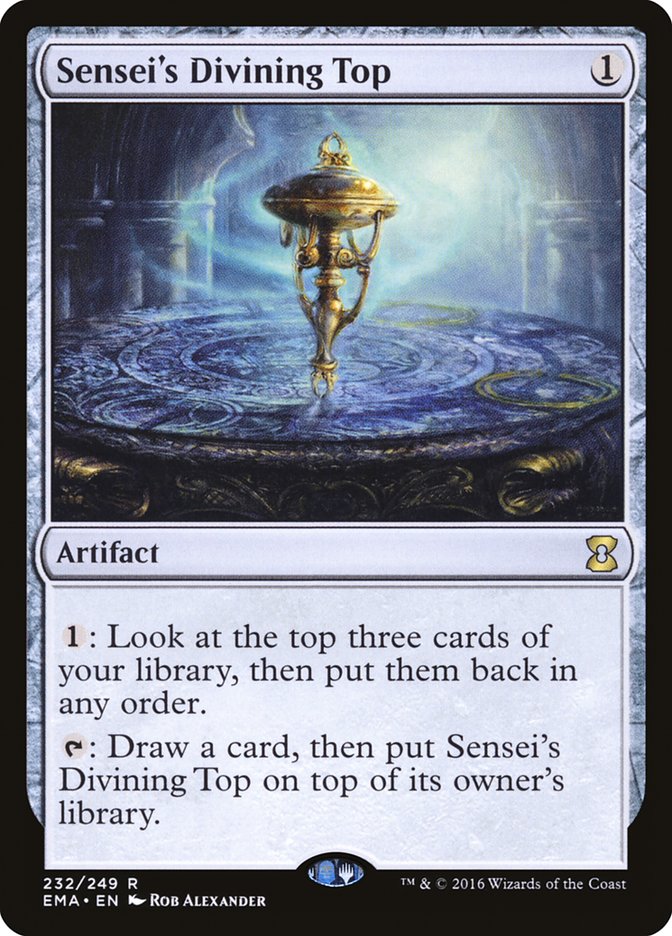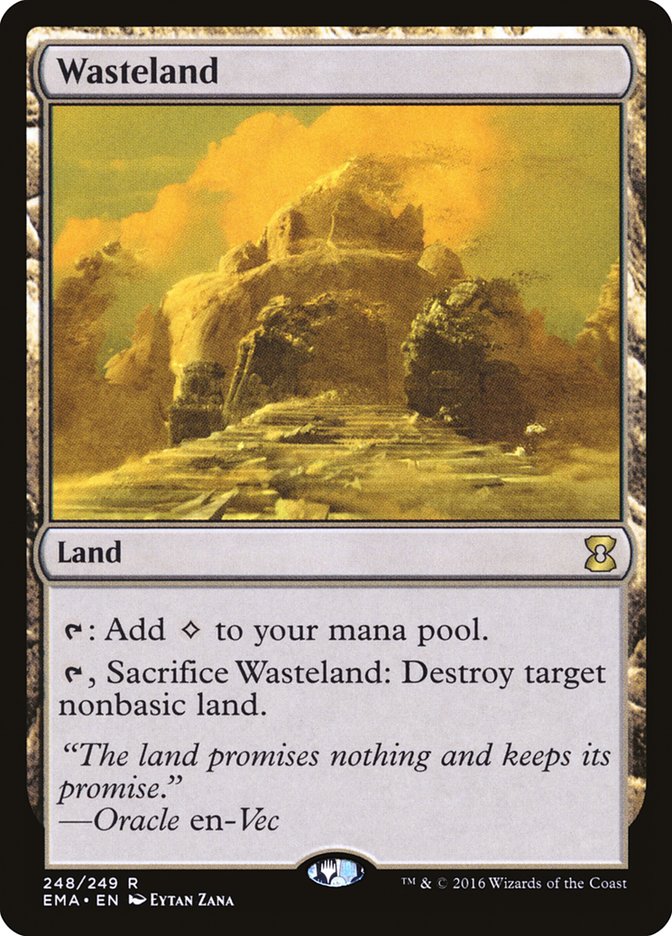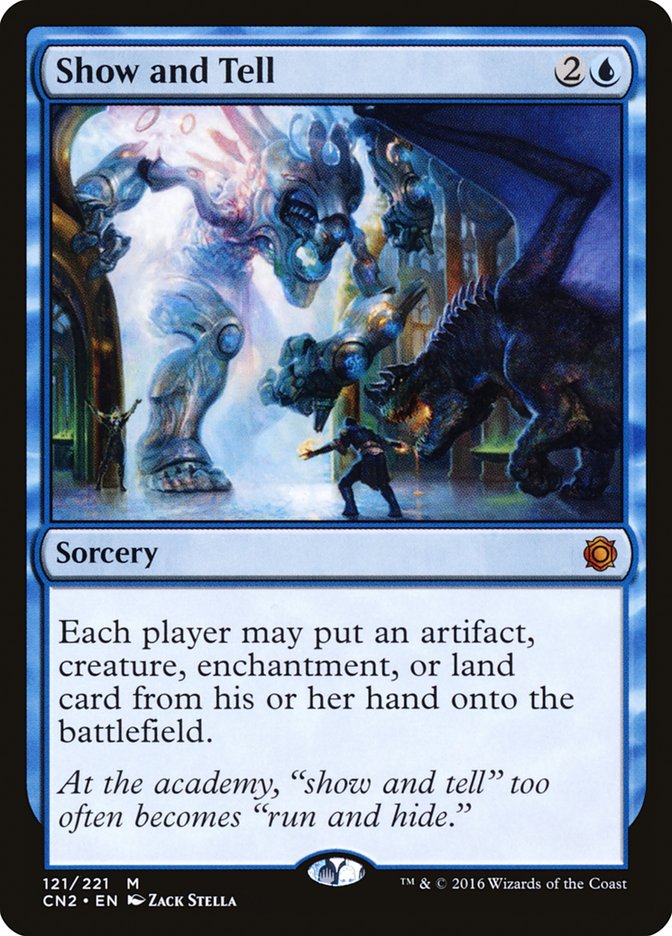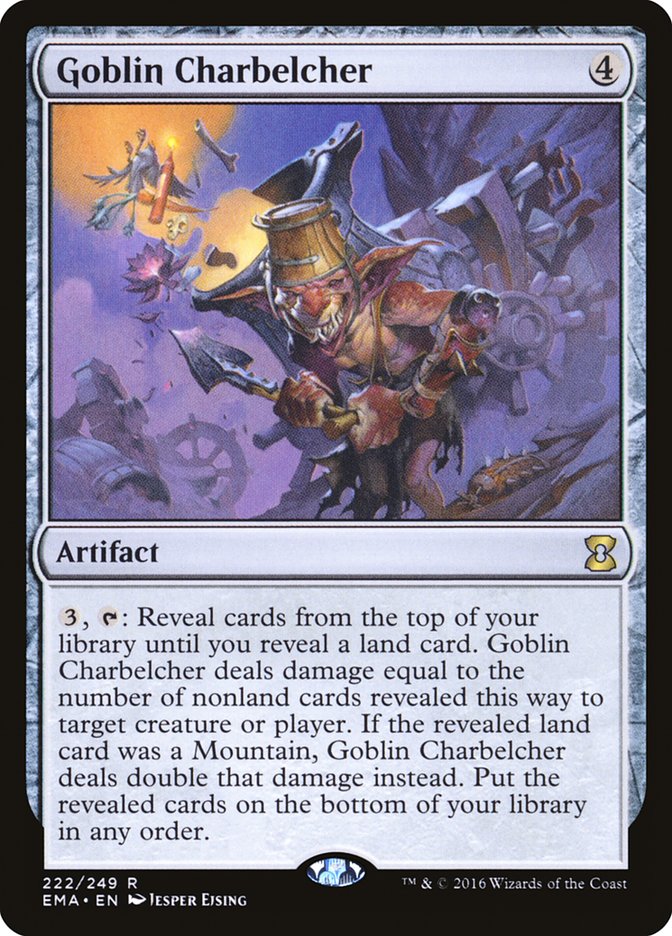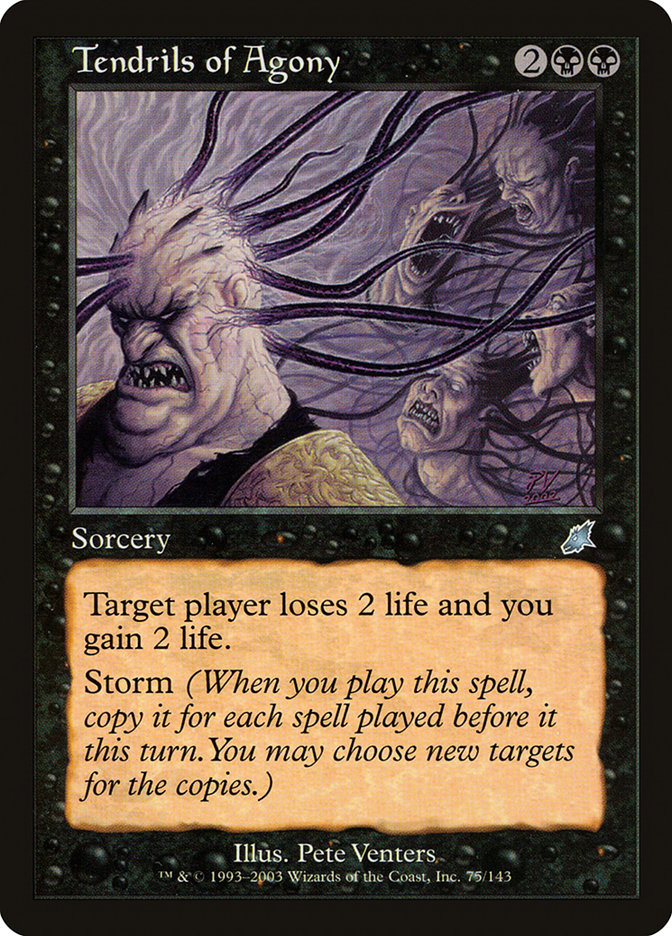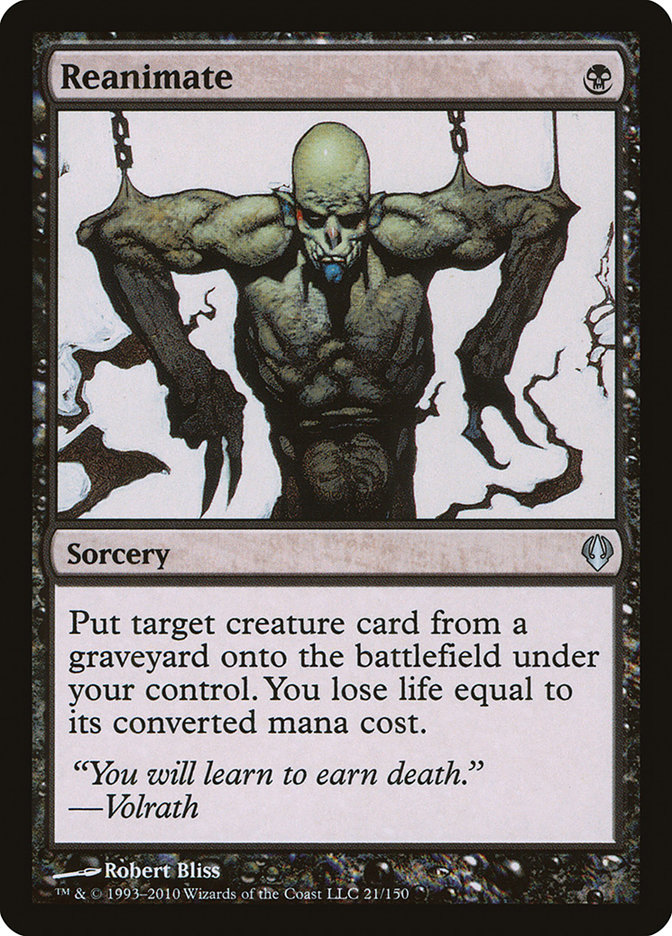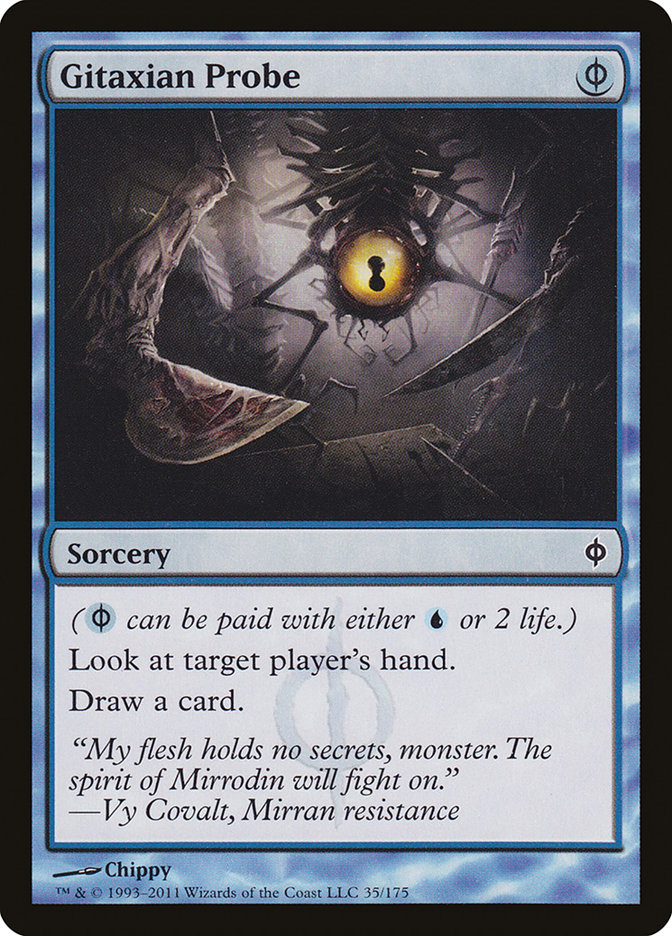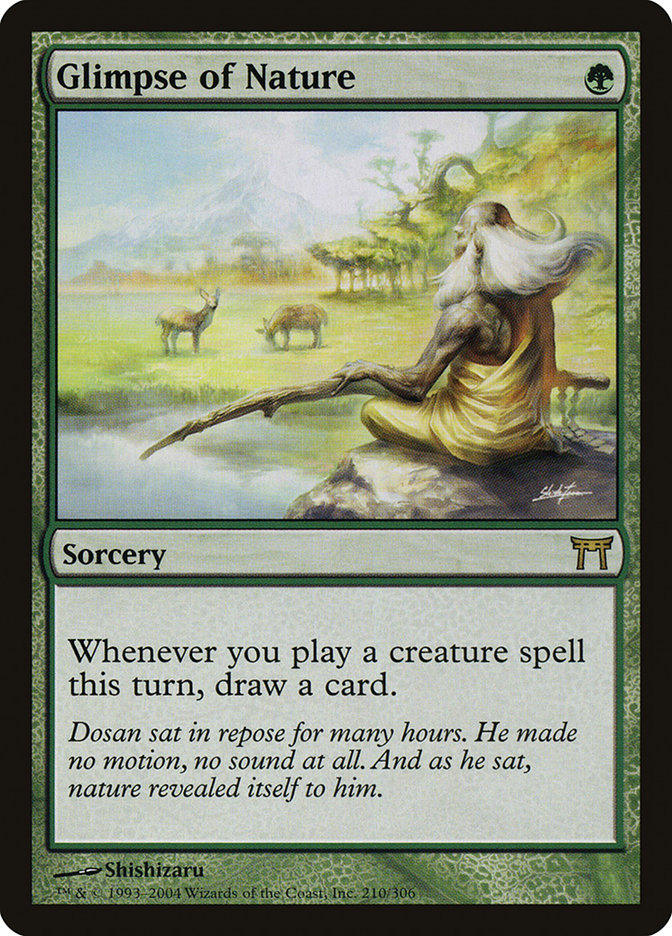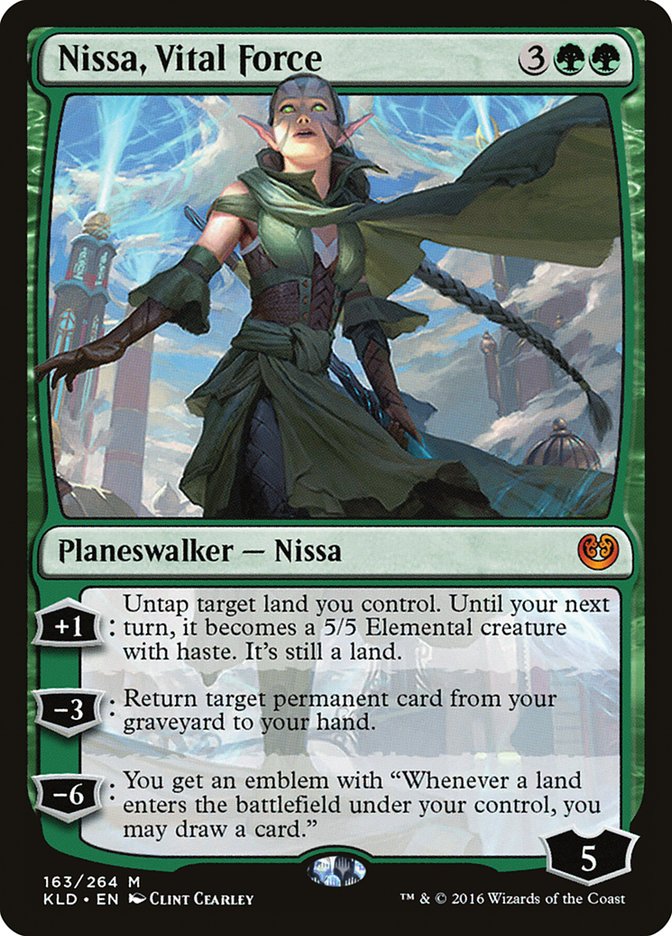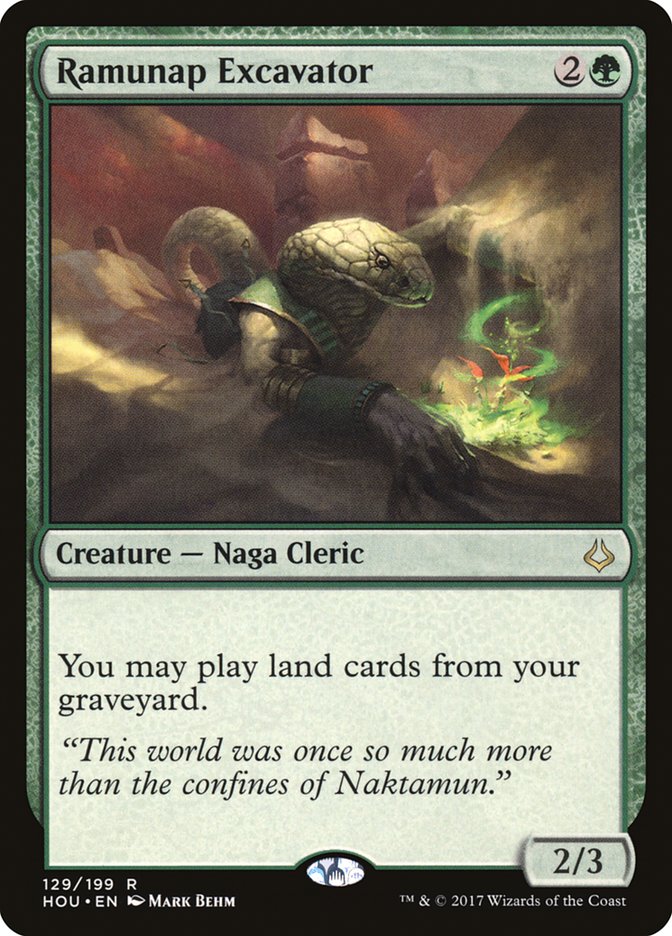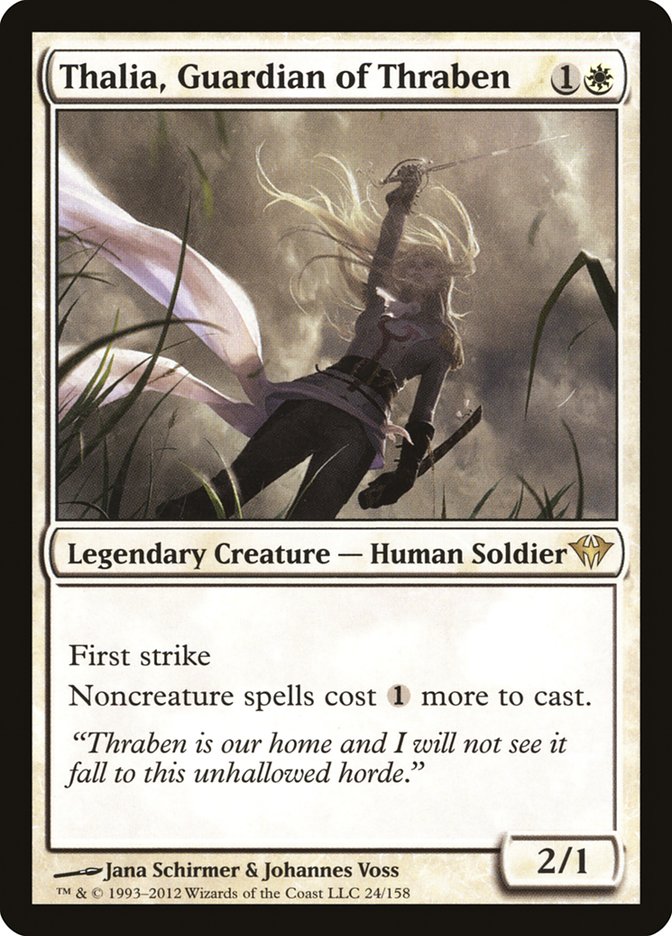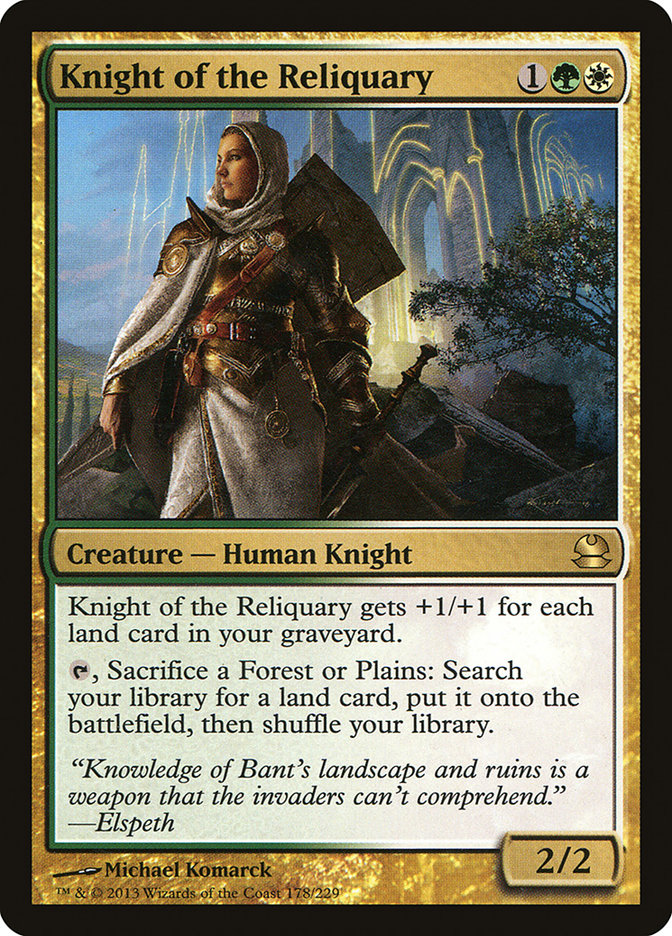We’ve been without direction in one of Magic’s most complex formats for quite some time now. It’s been since the last time the SCG Tour turned its attention to the format that I’ve given Legacy a second thought, to be honest. With that in mind, a lot has changed since then. One banning and a whole lot of potential role-players have given this forgotten format a massive, and much-needed, face-lift.
One of the most relevant pillars of the format having been removed gives light to an entire group of decks that haven’t seen the light of day because of the oppressive one-two punch that was Counterbalance / Sensei’s Divining Top. I’ve spent the past two weeks going over every potential adversary along my way to figuring out this seemingly still-undefined Legacy format. One deck I’ve been recommended by many to give a second look at is this mess of good cards.
Creatures (13)
- 2 Snapcaster Mage
- 3 Baleful Strix
- 4 Deathrite Shaman
- 2 Jace, Vryn's Prodigy
- 2 Leovold, Emissary of Trest
Planeswalkers (2)
Lands (20)
Spells (25)

Four-Color Leovold, or more colorfully “Czech Pile,” is simply a smattering of the best cards available in the format in every color aside from white. This is all made possible because of the recently questioned Deathrite Shaman. While I’ve heard arguments from both sides as to whether this creature is too good or not for the format, I think the idea that this card could end up on the Legacy banned list is ridiculous.
While I do believe that Deathrite Shaman is the best creature (you intend on casting for its mana cost) ever printed, I don’t believe that we have anything to really be concerned with in a format where people are able to deal lethal damage on Turn 1 with a Goblin Charbelcher. The main argument I’ve heard is that, much like the reason that Green Sun’s Zenith was banned in Modern, Deathrite Shaman reduces the number of different green- or black-based decks that a person would optimize their chances of winning with to those containing Deathrite Shaman.
The card does everything: it’s a mana accelerant, it’s a win condition, it helps keep you alive…it even blocks! There is no greater way to describe this card than a Swiss Army knife that Legacy has always wanted. So because it does everything and you’re likely wrong not to play it in any deck that can both cast it and has fetchlands woven into the manabase, is that a reason to ban it?
This card helps the fair decks fight the good fight and be a little bit risky with their manabase to incorporate a laundry list of useful and efficient answers to the truly degenerate things that happen in the format. So for those of you who would call for a Deathrite Shaman banning, I’d like to draw your attention to the following offenders of the format that remain untouched after so many years of play.
We’ve been living with monsters (not elephants, actual monsters) in the room for years ever since Legacy’s inception. They all have given the format shape over the years, wreaking havoc on players week in and week out back when we saw the Legacy format paired with Standard during the old days of the SCG Tour.
Wasteland leads to unenjoyable games where one player won’t even get to play Magic simply because they wanted to play more than two colors in their Legacy deck.
Show and Tell had moments of dominance where many top-level players couldn’t find a reason not to play the robust engine of simply casting a three-mana sorcery.
Goblin Charbelcher, while never a format-defining deck, is the reason why people need to play a card like Force of Will. If people decide the format is too fair and ever start to skimp on the “free” counterspell, Goblin Charbelcher will end the game on Turn 1, reminding you truly how broken this format can be.
On a similar note, Tendrils of Agony does its best to laugh at the card Force of Will, spawning an entire archetype due to the raw power that the Storm mechanic possesses. While we’ve come to know and find ways to attack the deck more commonly known as “ANT” (short for Ad Nauseam Tendrils), it’s still been an offender and will always remain the hearts of many as the true combo deck of Legacy, much like U/R Gifts Storm is in Modern.
Reanimate has been held in check as a combo deck primarily because of Deathrite Shaman, but for those who’ve been playing the format since before Return to Ravnica, I’m sure you remember how dominant a deck Reanimator was with no real graveyard hate being viable for many decks’ starting 60.
One quick aside: Gitaxian Probe. While it seems like a very innocent card in a format as inherently powerful as Legacy, Gitaxian Probe is a toxic card that should never have been printed. It adds almost nothing to decks that want to play a normal game and takes away an entire aspect of Magic, bluffing.
Playing ANT and want to know if the coast is clear but don’t have a Duress or Cabal Therapy? Gitaxian Probe. Want to see if it’s right to cast Show and Tell into an opponent who might have sideboarded in Ashen Rider? Gitaxian Probe first!
Typically seen in combo decks as a way to check if the coast is clear while enabling more looks at your library, Gitaxian Probe adds nothing to gameplay, since the cost of life is largely inconsequential if the game is to be over in its first few turns. While adding nothing, I think it takes away the ability to “game” your opponent through bluffing, a knock against one of the best skills I think you can acquire in Magic. Overall, it’s a card I wish wasn’t legal, but nothing to crusade over.
While there were outbursts back then, no one ever questioned the real offender in the format.
Brainstorm is too good for Legacy. It’s the most powerful card in the format and it isn’t even close. The number of decisions a card like Brainstorm gives you is mindboggling and often leads to a great reduction in variance because of how complex the card is.
Note: Before anyone says it, I’m not calling for the banning of Brainstorm in Legacy!
I think Brainstorm is a beautifully designed card and is one of the primary reasons that people love the Legacy format so much! I love casting it. I sigh when my opponents get to cast it and I don’t! One could argue that any deck not casting Brainstorm has to have a darn good reason not to be playing it, usually decks with other linear strategies that eschew the fetchland/dual land manabase which really gives Brainstorm its power and is another conversation entirely.
My point here is that for those of you who’ve thought that Deathrite Shaman is a card that Wizards could even consider banning should have some serious reality checks about the other cards you’re allowed to play in Legacy that no one is questioning. Deathrite Shaman is fine, it’s powerful, and it’s here to stay to continuously enable decks like Four-Color Leovold and the like.
So what about the rest of the format?
I’ve gone on a bit about blue decks that contain Brainstorm and Deathrite Shaman, and if you haven’t caught on, they’re everywhere, so be ready!
Creatures (13)
Planeswalkers (6)
Lands (18)
Spells (23)
Sideboard

This deck tries to capitalize on those being greedy with their mana, like how many Deathrite Shaman decks are using only one of the many dual lands available and fetchlands to find them, to completely lock the opponent out of the game by not letting them cast spells.
Blood Moon rears its ugly head here, trying to keep the format in check. With the fast mana available to us in the form of Ancient Tomb, City of Traitors, Simian Spirit Guide, and Chrome Mox, it’s not unlikely to see Blood Moon cast on Turn 1, before many people have even the chance of perhaps finding the singular basic land they may or may not have.
We briefly saw the existence of Mental Misstep and how prohibitive a card like that can be on the format; imagine if every single card was countered! Chalice of the Void has had great success over the years, especially in the hands of Todd Stevens in Modern, but in Legacy, where people play upwards of twenty to 30 cards that cost one mana in their deck, it’s easy to see how a simple Turn 1 Chalice of the Void can end games before they even begin.
A relatively new addition to the Red Stompy archetype, Chandra, Torch of Defiance truly is at its best in a format where no one is ready for it, such as Legacy. I wouldn’t be surprised if a deck like this in the hands of a capable pilot could really do some damage this weekend.
Creatures (28)
- 4 Wirewood Symbiote
- 4 Quirion Ranger
- 1 Birchlore Rangers
- 4 Heritage Druid
- 4 Nettle Sentinel
- 4 Elvish Visionary
- 2 Craterhoof Behemoth
- 4 Deathrite Shaman
- 1 Ruric Thar, the Unbowed
Lands (20)
Spells (12)

It’s been a long while since Pro Tour Berlin, shortly after the printing of Elvish Visionary, really gave one of Magic’s favorite tribes (and my personal favorite) an identity. While a lot of the early days of Magic, and times we’ve revisited tribes in blocks containing Elves, had a much more collective beatdown approach to them, over the years we’ve found interlocking synergies and abusive mana engines to turn this deck into a powerhouse that’s only gotten stronger since the banning of Sensei’s Divining Top.
The bane of this deck was always Counterbalance / Top locking them out of being able to cast spells and resigning them to Dryad Arbor beatdown and morphing their Birchlore Rangers or having extensive sideboards to aid in the matchup. With all of that being gone now, I fully expect Elves to be one of the more popular decks in DC this weekend, capable of preying on the more midrange blue decks trying to out-grind one another.
Much like Chandra, Torch of Defiance, Nissa, Vital Force is a powerhouse against a format that isn’t ready for it. While we’ve yet to see Nissa, Vital Force break out in Standard, I wouldn’t be surprised to see it sneak into more and more decks in Legacy as a resilient fair finisher that offers a lot of flexibility, either ending the game quickly or Regrowthing a permanent the opponent struggled to deal with the first time around.
While Elves happens to have the most legitimate reason to cast Deathrite Shaman, since it’s an Elf, it’s using it for its most appropriate reason, which is to add mana in a green deck. Despite all that, the deck wouldn’t be too sad to play in a world where they didn’t get to cast it, since there are so many replacements for it. The main issue with Elves has always been faster combo decks that are able to completely ignore what they’re doing and, with the lack of Force of Will, just run right over the tiny creatures.
One deck I think is poised for a return is an old format favorite playing some of the fairer games of Magic in the format.
Creatures (26)
- 3 Mother of Runes
- 1 Azusa, Lost but Seeking
- 4 Noble Hierarch
- 4 Knight of the Reliquary
- 1 Qasali Pridemage
- 4 Stoneforge Mystic
- 1 Scavenging Ooze
- 4 Thalia, Guardian of Thraben
- 2 Deathrite Shaman
- 2 Ramunap Excavator
Lands (23)
Spells (11)

Maverick might just be the worst-named deck in Legacy. but I’m not sure that will ever change.
Not many cards make an impact on Legacy. The card pool is very deep and most of the cards that get printed these days aren’t quite there when it comes to making the cut.
One card that makes random green creatures with unique abilities better is Green Sun’s Zenith. While it’s not obvious that a card like Ramunap Excavator would be good enough for the format, when you just take into account the Wastelands you’d be able to use over and over, having this card as a target for Green Sun’s Zenith is certainly worth it. The complement to Ramunap Excavator is of course Azusa, Lost but Seeking, allowing you to truly devastate an opponent with a greedy manabase.
With Humans on the rise in Modern, it’s only fair that we include the most disruptive of Human creatures, Thalia, Guardian of Thraben. This Thorn of Amethyst on a stick has given these types of decks life, since most of what the blue mages of the format are doing involve casting an offensive number of cantrips like Brainstorm, Ponder and the like, and there’s a big difference between a one-mana Brainstorm and a two-mana one.
Thalia, Guardian of Thraben, alongside the recursive Wastelands that both Knight of the Reliquary and Ramunap Excavator supply, can lock opponents out of the game while you beat them down with the most medium assortment of creatures Legacy will call playable, with Mother of Runes and Stoneforge Mystic leading the charge. This deck is on my radar for this weekend as something that could make its first 2017 showing and turn some heads!
Legacy has always been a wild format, and anyone entering a tournament with such absurd cards like the ones we’ve talking about being legal knows what they’re getting into ahead of time. That all considered, there are fundamentals of the format that can be exploited, such as the high density of one-mana cards being played paving the way for a deck supporting Chalice of the Void to really punish people. The ratio of basic to nonbasic lands being played could even warrant the inclusion of Ghost Quarter in decks wanting effective additional copies of Wasteland.
There’s a lot to think about, and while you can never know what to expect in Legacy, you can be sure to be surprised this weekend, like I know I will be.


